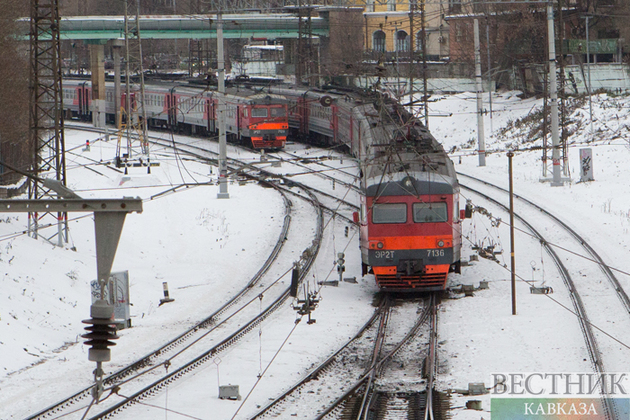China is looking at launching nuclear-tipped intercontinental ballistic missiles (ICBMs) from specially-designed high-speed trains that can transport its nuclear arsenal across the country’s large landmass, making them more difficult to intercept and destroy, Asia Times writes.
The country’s high-speed trains travel up to 350 kilometers per hour, with 16 carriages each weighing about 16 tons. China has 37,000 kilometers of high-speed rail as of this year, which can potentially give its rail-based nuclear arsenal excellent mobility and survivability.
According to Professor Yin Zihong, the head of China’s national research efforts on railway nukes, a modern ICBM could fit inside a carriage but when blasting off its weight would generate thrust two to four times the train’s maximum load capacity. While modified trains could withstand these launch forces, the stress of firing would inevitably pass down to the tracks and other supporting infrastructure, potentially making them unsafe and unusable.
The powerful forces generated by an ICBM launch can penetrate up to eight meters underground, and even heavy-duty tracks would have to be substantially reinforced to withstand a missile launch.
However, a study published in the peer-reviewed Journal of Southwest Jiaotong University last week mentioned that heavy-duty rails may not be necessary for rail-based ICBM launches, as most of the damage would be confined to shallow areas of rail infrastructure which could easily be detected and repaired.
Also, the extremely fast operations of high-speed tracks require them to be built more robustly than standard rails, with some high-speed tracks in China having foundations up to 60 meters deep.
In December 2016, China tested a rail-mobile version of its DF-41 ICBM, with a “cold launch” test which ejected the missile out of its rail canister with pressurized gas without the missile’s engine being fired. This contrasts with a full test where the missile engine would ignite milliseconds after leaving the launch canister. The test run was likely meant to check the tube launch system’s compatibility with its rail car.
The DF-41 is reportedly 21-22 meters long, 2.25 meters in diameter and weighs 80,000 kilograms at launch. It uses a three-stage solid-propellant engine to reach ranges of 12,000 to 15,000 kilometers and is claimed to load up to 10 Multiple Independently-targetable Re-entry Vehicles (MIRVs), along with decoys and penetration aids to defeat missile defenses.
These rail-launched missiles may also be upgraded with hypersonic glide vehicles, which can further increase the difficulty of defeating the weapons.
China’s railway nuke project is emblematic of its military-civil fusion strategy, which is aimed at promoting the sharing of resources and collaboration in research and applications, and ensures the mutually beneficial coordination of economic and national defense construction.
That said, China may be fusing its commercial high-speed rail network with its nuclear weapons to give its land-based arsenal increased tactical and operational advantages, as they can be easier shielded from enemy surveillance compared to truck-based launchers and are less vulnerable to inclement weather conditions.
In a crisis scenario, US intelligence would struggle to pinpoint China’s railway nukes and distinguish them from decoys considering China’s huge landmass, extensive high-speed rail network, sophisticated internal security and counter-intelligence apparatus and cyberwarfare capabilities.
Despite these advantages, rail-based nukes have their limitations. For one, they are potentially vulnerable to terrorist attacks, which may require costly and extensive security procedures. Supplying a mobile nuclear unit and developing its logistics capability could also prove to be prohibitively expensive.
The idea of railway nukes goes back to the Cold War, based on the simple idea that a moving nuclear delivery system is far harder to take out in a pre-emptive strike. While this is the main principle behind ballistic missile submarines as they are very hard to track while out at sea, the idea can also be applied to land-based nuclear weapons.
Rail-based nuclear weapons can be concealed by blending in with civilian rail traffic or underground facilities as they constantly move about. While a pre-emptive strike may destroy some of these nuclear-armed trains, it is highly unlikely that such a strike would destroy a large fleet.
The Soviet Union started research on rail-mobile ICBMs in the 1960s, but progress was slow and the first functional systems were not fielded until the 1980s.
However, technical issues such as fragile liquid-fuel systems and electronics, limitations in solid-fuel technology, complexities in mounting an ICBM on a train and improvements in road-based systems meant that rail-based nukes never supplanted their silo and submarine-based versions.
Contemporary advancements in missile and rail technology, however, may again prove the concept is feasible.






